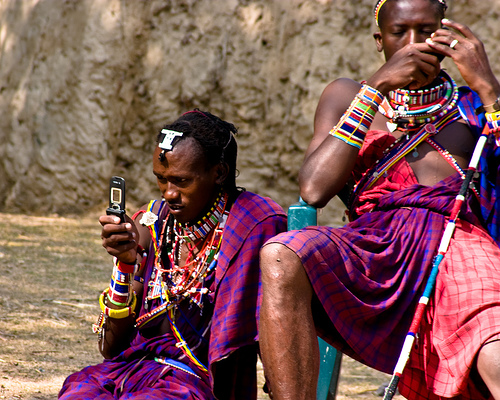This report was released last week about the mobile money service M-Paisa in Afghanistan. It provides some intriguing insights on lending issues faced by Afghans and the mobile banking services rapidly emerging in their country.
The product branded M-Paisa in Afghanistan was initially piloted by local operator Rashon in collaboration with Vodafone, to provide microloan disbursement and repayments for MFIs as well as a person-to-person money transfers. According to the M-Paisa website they offer safe, reliable and fast access to a range of financial services including:
- Person to person money transfer.
- Disbursement and repayment of microfinance loans.
- Airtime purchases.
- Merchant payments.
- Disbursement and receipt of salaries.
With low levels of fixed bank infrastructure and rising mobile penetration, it seemingly appears that the cheap and secure features prominent in mobile banking would lead to a rapid adoption of its services in Afghanistan.
 However, Rashon soon found that they faced numerous consumer barriers central to the service’s overall adoption in Afghanistan. With a population of 30 million people, 36% of who live below the government defined poverty line and 74% of who are illiterate; Afghanistan is the poorest country in the world outside Africa.
However, Rashon soon found that they faced numerous consumer barriers central to the service’s overall adoption in Afghanistan. With a population of 30 million people, 36% of who live below the government defined poverty line and 74% of who are illiterate; Afghanistan is the poorest country in the world outside Africa.
Therefore, textual, mobile and financial illiteracy was one of the largest hurdles that the company had to overcome. Since consumers could not use SMS to transfer funds, Roshan developed an Interactive Voice Response (IVR) system in three languages, English, Dari and Pashto.
Other issues that the authors concluded was a general distrust of financial institutions that go against the well established Hawala agent network, and a commonly established distrust of non-tangible assets. There was also a common “chicken and the egg” problem of investing in a branchless banking agent network without an adequate amount of customers—and customers less willing to try out the service—without there being a strong agent network. The authors of the report stated:
But M-paisa is caught in the tricky position that faces all services requiring network dynamics—to succeed, they must educate and nurture both consumers and agents, neither of which has much incentive to jump in first without the other being around.
The authors of the report, Jan Chipcase and Panthea Lee, traveled to Afghanistan in August 2010 to four different cities to explore traditional money and emergent mobile money practices in Afghanistan. While in the field they conducted in depth interviews of three potential mobile customers and one M-Paisa agent, their main goal being to contribute to the knowledge base of the mobile money community.
They sought to build on research such as Portfolios of the Poor, which highlighted the strategies the poorest members of societies use to manage their limited resources, as well as the sector-galvanizing discussions led by the World Bank’s consultative Group for the poor and the GSMA’s Mobile Money for the Unbanked initiative.
Throughout the author’s studies, they concluded that with the growth in mobile penetration, the trust in service providers is also beginning to surface. Brand recognition and trust in Roshan and other service providers has been gradually expanding. Concurrent with the evolution of cell phones being a staple in Western society, the authors believe that M-Paisa have a great opportunity to transform Afghan society.
Just as mobile telephony isn’t as much about the phone as it is about the conversation, mobile banking is not about the money—it’s about what the money can enable.



 An Egyptian rice farmer shows his drought damaged rice crop in a village near Balqis on June 14, 2008. REUTERS/Nasser Nuri
An Egyptian rice farmer shows his drought damaged rice crop in a village near Balqis on June 14, 2008. REUTERS/Nasser Nuri



















































